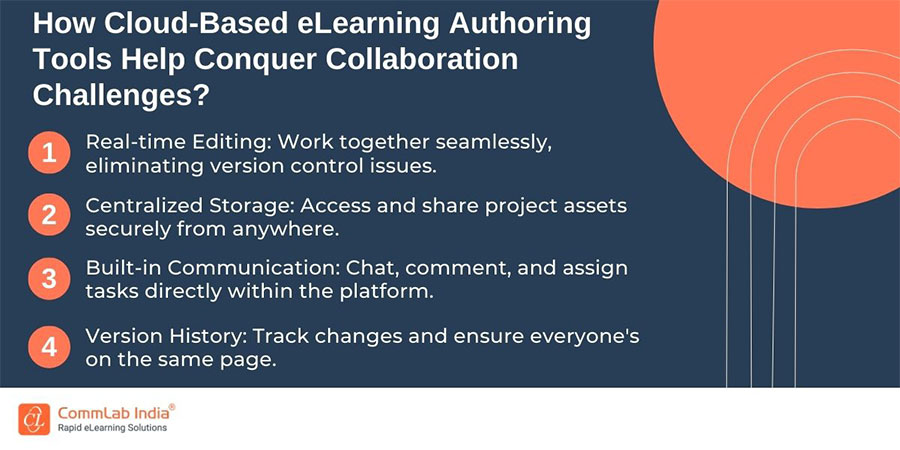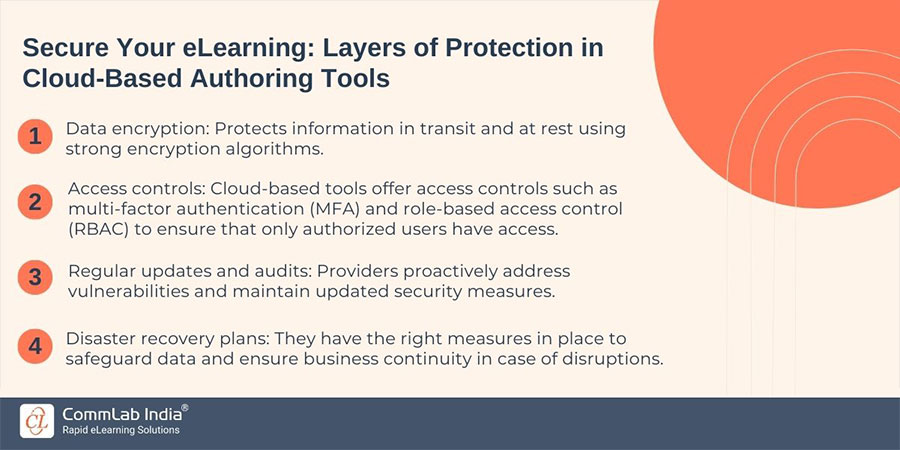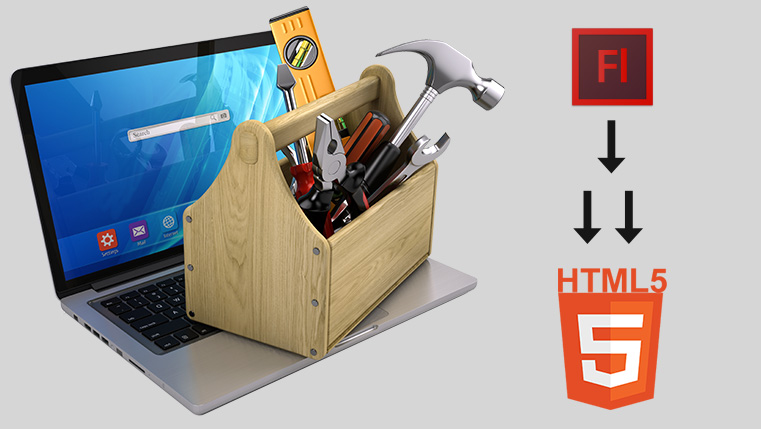10 FAQs About Cloud-Based eLearning Authoring Tools [Answered]
![10 FAQs About Cloud-Based eLearning Authoring Tools [Answered] 10 FAQs About Cloud-Based eLearning Authoring Tools [Answered]](https://blog.commlabindia.com/hubfs/blogs/cloud-based-elearning-authoring-tools-top-faqs.jpg)
Tired of heavy software installations and outdated files scattered across your desktop? The future of eLearning authoring is sleek, streamlined, and accessible from anywhere, and that future is cloud-based. But before you dive into this exciting world, you might have some questions. Fear not for we're here to answer the top 10 FAQs about cloud-based eLearning authoring tools and get you started on your cloud-powered eLearning authoring journey!
So get ready, we have a long way to go!
Cloud-Based Authoring Tools: Key to Mastering eLearning Development.
Top benefits of cloud-based eLearning authoring tools:
- Secure Storage: Safely store eLearning content online, eliminating data loss risks.
- Anywhere Access: Work from any device with an internet connection.
- Collaboration: Real-time collaboration for global teams.
- Version Control: Easily track changes and maintain history.
- Controlled Permissions: Fine-grained access management.
10 FAQs About Cloud-Based eLearning Authoring Tools [Answered]
1. What Are Cloud-Based eLearning Authoring Tools?
Cloud-based eLearning authoring tools are software applications that allow instructional designers, training managers, and content creators to develop, design, and publish eLearning courses directly from the cloud. Unlike traditional desktop-based tools, cloud-based solutions, which are built for modern-day users, offer flexibility, collaboration, and accessibility, enabling users to work from anywhere with an internet connection.
2. How Do Cloud-Based eLearning Authoring Tools Differ from Desktop-Based Tools?
The key difference between the tools lies in accessibility and collaboration. Cloud-based tools are accessible via web browsers, eliminating the need for local installations. Users can collaborate in real-time, share content, and work seamlessly across devices. Desktop-based tools, on the other hand, require software installations and limit collaboration to specific devices.
3. Which Cloud-Based eLearning Authoring Tools Support Collaborative Workflows?
There are several cloud-based eLearning authoring tools that excel in collaboration. For instance, iSpring Suite allows team members to co-author courses, review content, and provide feedback within the platform. Similarly, Articulate 360 offers cloud-based collaboration features, making it easier for teams to work together on eLearning projects.

4. Can I Access My Projects Anytime and Anywhere?
Absolutely! Cloud-based eLearning authoring tools store your projects securely in the cloud. You can access them from any device with an internet connection. Whether you’re at the office, home, or on the go, your eLearning content is always within reach.
This freedom and flexibility allows for:
- Work on the go: Ditch the desk. Access and edit projects from any device, anywhere.
- Real-time collaboration: Untether your team. Collaborate seamlessly, regardless of location.
- Always up-to-date: Centralized storage ensures everyone has the latest version, simplifying project management.
4.1 Offline Access: Can I work on projects without an internet connection?
While some cloud-based authoring tools offer limited functionalities offline, such as basic editing or content review, they typically require an internet connection for full-fledged development and collaboration. This ensures real-time updates, centralized storage, and seamless collaboration.
→ Download Now: Authoring Tool Finder [Free Tool]
5. How Secure Are Cloud-Based eLearning Authoring Solutions?
Most reputable cloud-based tools prioritize security. They use encryption protocols, regular backups, and multi-factor authentication to safeguard your data. Always choose tools from trusted providers and inquire about their security measures.

6. Do Cloud-Based Authoring Tools Offer Scalability?
Yes, scalability is a significant advantage. Unlike traditional software limited by hardware constraints, cloud-based tools automatically scale to meet your needs. As your team grows or project size increases, you can add new users, increase storage capacity, and manage larger projects seamlessly.
Further, this pay-as-you-go approach eliminates the need for upfront hardware investments and allows you to optimize costs based on your current needs. Additionally, cloud infrastructure automatically handles resource allocation and maintenance, freeing up your IT team to focus on core eLearning tasks.
7. Can I Collaborate with Subject Matter Experts (SMEs) Easily?
Yes. Cloud-based tools bridge the gap! Invite subject matter experts (SMEs) to review content, offer feedback, and make edits directly within the platform. This eliminates communication silos, streamlines the feedback process, and ensures expert input is seamlessly integrated, leading to more accurate and effective eLearning content.
8. How Does Version Control Work in Cloud-Based Authoring?
Say goodbye to version control headaches! Cloud-based tools automatically capture every change, allowing you to:
- Track the evolution of your eLearning project at every stage.
- Revert to previous versions if needed, ensuring flexibility and minimizing the risk of errors.
- Maintain a clear history of edits, making collaboration and communication smoother.
Cloud-based authoring simplifies version control, giving you the peace of mind and control you need to create high-quality eLearning experiences.
9. Are Cloud-Based Tools Cost-Effective?
In most cases, yes. Cloud-based tools offer a financially attractive alternative to traditional software. Compared to upfront licensing fees and expensive hardware requirements, cloud solutions typically offer subscription-based pricing, allowing you to pay only for what you use.
This flexibility makes it suitable for organizations of all sizes, from small startups to large enterprises. Additionally, you eliminate costs associated with hardware upgrades and maintenance, further boosting the cost-effectiveness of cloud-based authoring.
10. What About Integration with Learning Management Systems (LMS)?
Publish your eLearning creations with ease! Cloud-based tools usually support industry standards like SCORM and xAPI, enabling smooth integration with your Learning Management System (LMS). This eliminates manual upload hassles and ensures your content is readily accessible to learners within your existing learning ecosystem. Remember to verify compatibility with your specific LMS before diving in, guaranteeing a streamlined publishing and deployment process.
Explore common misconceptions about eLearning authoring tools [Watch Now]
Wrapping Up
Cloud Authoring: Your Questions Answered - Embrace the Future of eLearning!
So there you have it! The top 10 FAQs about cloud-based eLearning authoring tools, answered and demystified. From enhanced accessibility and collaboration to effortless version control and cost-effectiveness, cloud-based tools offer a powerful and versatile solution for creating engaging learning experiences.
Whether you're a seasoned eLearning professional or just starting out, embracing the cloud empowers you to work smarter, not harder. Ditch the limitations of traditional software and unlock the potential to deliver impactful learning, anytime, anywhere!
Remember, choosing the right cloud-based eLearning authoring tool depends on your organization’s unique requirements. Evaluate features, ease of use, collaboration capabilities, and security to find the perfect fit for your eLearning projects.
Need help finding the right fit for you? Here's a tool to help:





